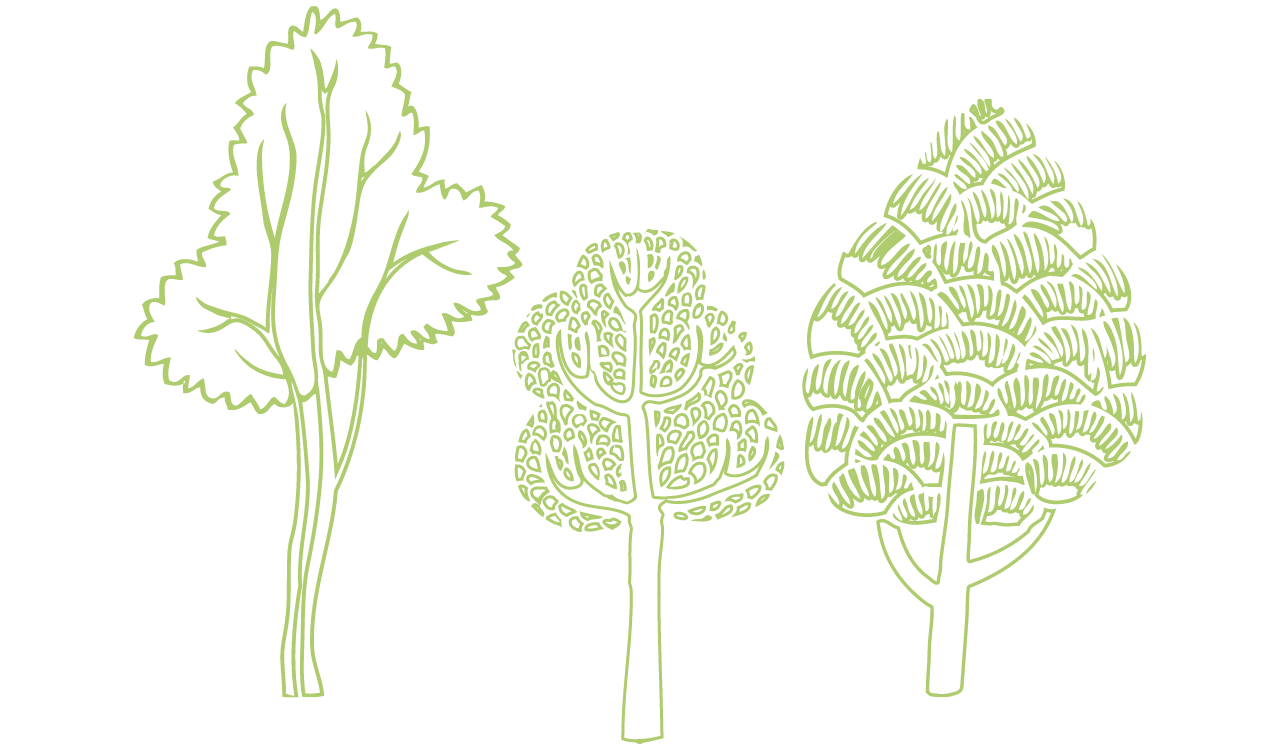Tree pose as the barometer or thermometer for grounding.
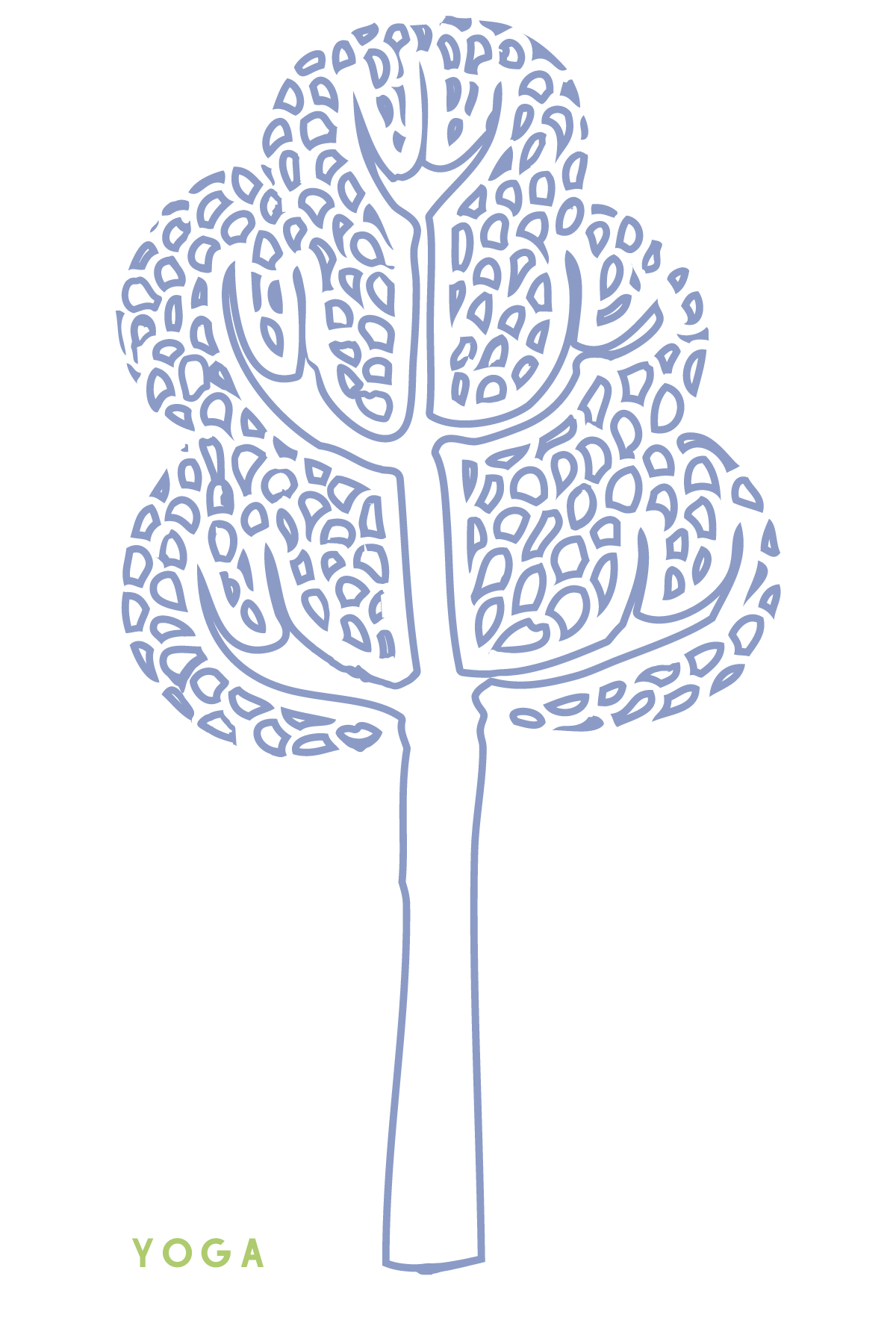
Tree pose in Sanskrit is known as Vriksasana or Vrksasana and is a pose that tests and grounds you. Grounding is something that I used to have difficulty with when going through bigger life changes. Those were the times when I unconsciously wanted to detach from the Earth. But tree pose always let me know where I stood. It acts as an indicator of how detached or grounded to the Earth I am at any given moment. It seems like that would be true for anyone practising it.
It can bring you back to earth as one of the grounding yoga poses we are taught.
When I was a child, there was a family who lived across the street, the Ziellas. Mr and Mrs Ziellas' daughter Wendy was one of the oldest children on the block. Wendy was probably more than 15 years older than me. In truth, she was not a child at all. She used to hug a tree in front of her house and, upon seeing her do this, I wanted to know more. She taught me how to hug a tree and, I did it regularly.
When I went away to summer camp as a young girl, spending time in the forest hiking, I continued to hug trees. Now, living in a city, I do not do it enough. I touch trees and bushes as I pass them but, I almost never hug a tree. The last time I have taken the time to hug a tree was in January 2018 when I visited the Redwood Forests in Northern California. Before that, it was 2010 in Glastonbury, England. I [still] need to hug a tree or trees more regularly. In the meantime, I will continue to practice tree pose. It is one of the poses where I can morph into the pose name.
My feet are a bit rough around the edges, like leather but not leather that has a pull or grip, more like glove leather – smooth, so when practising tree pose, if my yoga pants are full length, it increases the level of difficulty keeping the sole of my foot on my upper inner thigh – even when pressing inward. Each year it gets easier. Give me shorts for access to skin and no problem. Then my only difficulty sometimes is falling over because I am either detached from the Earth that day or simply tired. Sometimes though - whether my foot is below or above my knee, I stand tall focused and become the tree.
Challenges & cautions
The main caution is to never directly place your foot in the knee zone in order to avoid an accidental injury. Instead, when coming into the tree pose, place your foot above or below the knee on your calf. If you place your foot above the knee, then press the sole of your foot into your inner thigh, without gripping your toes on either foot.
moving into the pose
Step by step, I begin by standing with my feet firm on the ground, hands in front of my heart in Anjali mudra (prayer hands). Breathing deeply, I find a point of focus (drishti). Then, placing and pressing my whole foot into my upper thigh to find equilibrium. If my energy is low, my foot will stay lower on my calf. There less pressure is needed, and it's easier to stay for a few breaths when you're beginning or tired.
You can use the wall for support to help you overcome any fears of falling. Test yourself by removing your hand from the wall.
Staying there for a few breaths, stand firmly rooted into the ground. Remember to stay focused on the drishti or focal point whilst taking deep even breaths. Relax into the pose. Tensing up will cause unease. Think about a skyscraper. When you are on one of the upper floors, you can notice and hear the sway of the building. It's designed to work with the elements yet remains grounded. Seek balance between being rooted to the ground and having the ability to move with the wind. When you feel stable, you can challenge your balance as you look towards the sky or ceiling.
Now it is time to do exactly what you did on the first side, on the other side. So even if one side is easier than the other, balance is the key. We are working towards equilibrium and strengthening the weaker side so it will someday meet the level of the stronger side.
mythology and the queen
Beyond the obvious physical benefits of tree pose ranging from increased balance, poise and better posture & concentration, there is a mythology around it that includes Queen Sita (shown in the image with Rama and Lakshmana) and her trials and tribulations.
Sita was exiled to the forest twice during her life; once abducted by Ravana and rescued and, the second time abandoned by her husband Sri Ramachandra. She, as the daughter of the Bhumi Devi—the Earth itself felt rooted and one with it. In trying to overcome torment she stood beneath the trees breathing and focusing on a dhristi point.
The trees sheltered and stood with Sita as she stayed beneath them chanting and breathing as she endured hardships.
This story tells us of Sita as the symbol of patience, standing firm in times of change, and growing from within. The trees stood with her until one day Rama sent Hanuman to find her. With many of the mythological stories, there are varying accounts of who killed who, who rescued who and what actually happened. Whatever happened does not impact the key point. That is that the trees sheltered and stood with Sita as she stayed beneath them chanting (mantra) and breathing (pranayama) as she endured hardships.
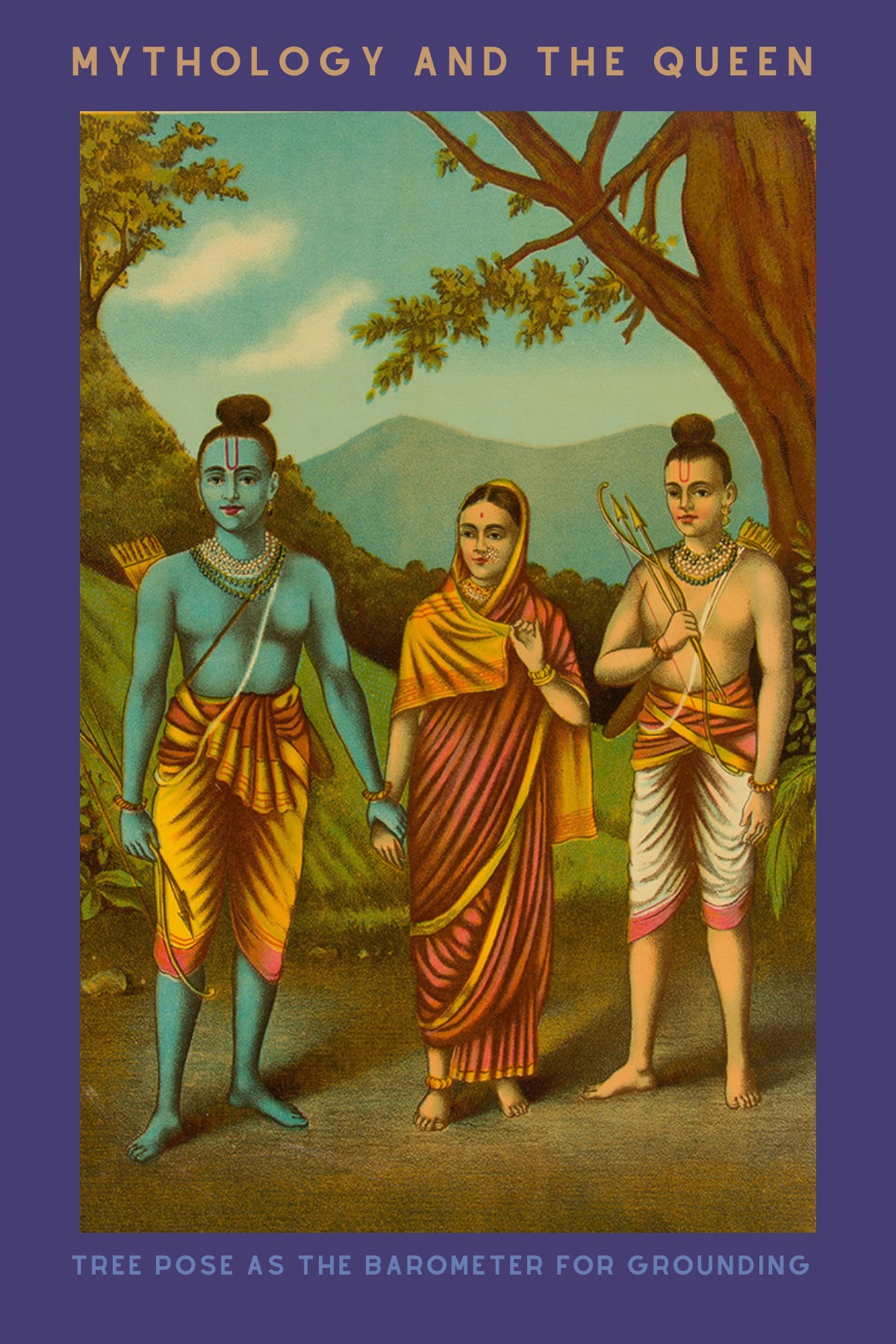
benefits of tree pose
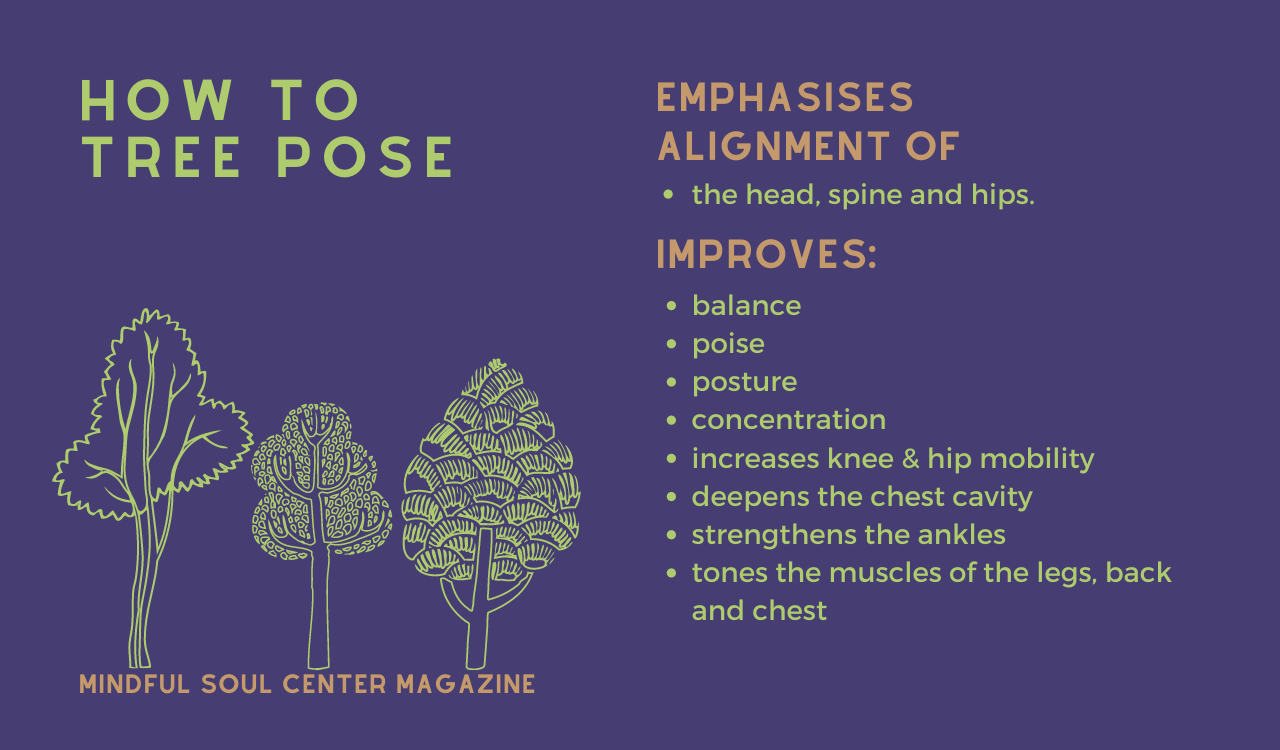
The tree pose emphasises the alignment of the head, spine, and hips. It creates knee and hip mobility, helps alleviate inflammation of the lower back, and releases any tension in the abdomen. It also improves your balance, posture, and concentration. It strengthens the ankles, tones the muscles of the legs, back and chest. In the end, when you practise tree pose, you will be poised and ready to stand your ground.
Watch my instructional video on how to do tree pose.
This is the first video where I teach a pose following my yoga teacher training. It is unedited and, although I thought my feet were visible, they are not - whoops!
Practice this pose and reap its rewards! Namaste!
VRIKASANA or TREE POSE infographic
A Mindful Soul Center Infographic: Right Click on the Image to Save
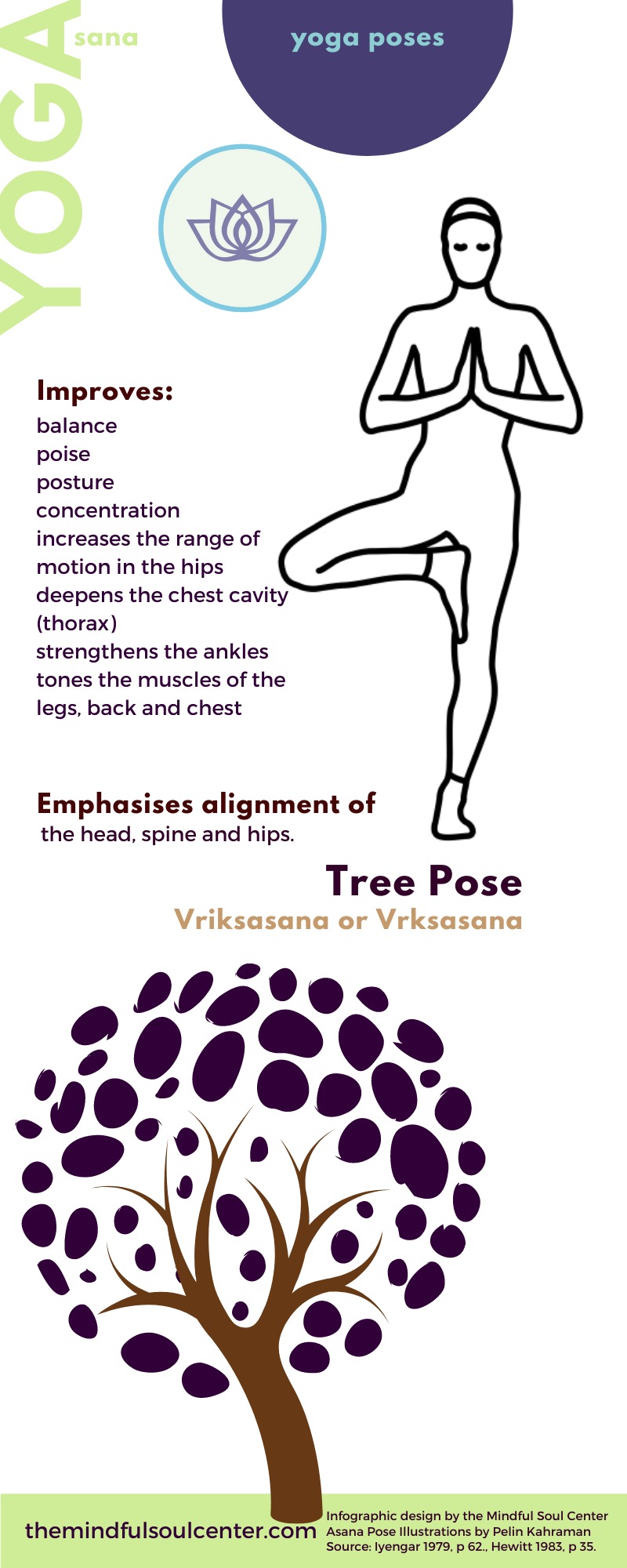

![Tree Pose, Mythology and Benefits [Vriksasana] 1 Queen Sita in the forest - Rama, Sita and Lakshmana](https://mindfulsoulcenter.co/wp-content/uploads/2021/09/tree-pose-graphics-mythology-and-the-queen-sita.jpg)
